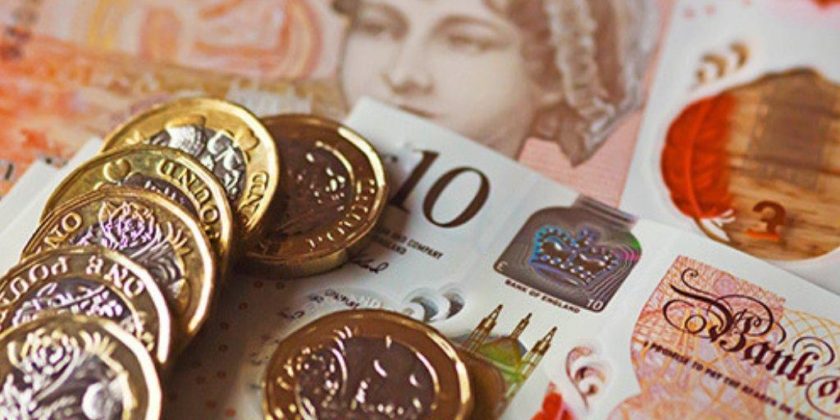Bank of England raises interest rates to 4.5% as inflation is 10.1%

The Bank of England’s Monetary Policy Committee (MPC) has voted to raise the base rate to 4.5%, the 12 consecutive increase.
In December 2021 the base rate was at 0.1% and started to rise to where it is today, the last time the rate was at 4.5% was in October 2008.
The Bank Rate / Interest Rate
The ‘Bank Rate’ is the single most important interest rate in the UK. In the news, it’s sometimes called the ‘Bank of England base rate’ or even just ‘the interest rate’.
How Bank Rate affects you partly depends on if you are borrowing or saving money.
If rates fall and you have a loan or mortgage, your interest payments may get cheaper. And, if you have savings, you may be paid less interest. If interest rates fall, it’s cheaper for households and businesses to increase the amount they borrow but it’s less rewarding to save.
Lower rates also tend to increase the value of wealth, such as people’s pensions or housing, compared to what they would have been.
Bank of England explanation
Explaining the move upwards again today Bank of England said, “The Committee’s updated projections for activity and inflation are set out in the accompanying May Monetary Policy Report. They are conditioned on a market-implied path for Bank Rate that peaks at around 4¾% in 2023 Q4 before ending the forecast period at just over 3½%.
“There has been upside news to the near-term outlook for global activity, with UK-weighted world GDP now expected to grow at a moderate pace throughout the forecast period. Risks remain but, absent a further shock, there is likely to be only a small impact on GDP from the tightening of credit conditions related to recent global banking sector developments. Headline inflation has been falling in the United States and euro area, although core inflation measures remain elevated.”
“UK GDP is expected to be flat over the first half of this year, although underlying output, excluding the estimated impact of strikes and an extra bank holiday, is projected to grow modestly. Economic activity has been less weak than expected in February, and the Committee now judges that the path of demand is likely to be materially stronger than expected in the February Report, albeit still subdued by historical standards. The improved outlook reflects stronger global growth, lower energy prices, the fiscal support in the Spring Budget, and the possibility that a tight labour market leads to lower precautionary saving by households.”
Speaking on inflation they said, “CPI inflation was 10.2% in 2023 Q1, higher than expected at the time of the February and March MPC meetings, with the upside surprise concentrated in core goods and food prices. Although still elevated, nominal private sector wage growth and services CPI inflation have been close to expectations.
“CPI inflation is expected to fall sharply from April, in part as large rises in the price level one year ago drop out of the annual comparison. In addition, the extension in the Spring Budget of the Energy Price Guarantee and declines in wholesale energy prices will both lower the contribution from household energy bills to CPI inflation. However, food price inflation is likely to fall back more slowly than previously expected. Alongside news in other goods prices, this explains why the Committee’s modal expectation for CPI inflation now falls back more slowly than in the February Report.”
Inflation
Inflation is a measure of how much the prices of goods (such as food or televisions) and services (such as haircuts or train tickets) have gone up over time.
Usually people measure inflation by comparing the cost of things today with how much they cost a year ago. The average increase in prices is known as the inflation rate.
So if inflation is 3%, it means prices are 3% higher (on average) than they were a year ago. For example, if a loaf of bread cost £1 a year ago and now it’s £1.03 then its price has risen by 3%.
“The latest Bank of England base rate rise could help to curb inflation, which would bring much-needed relief to those struggling with soaring prices, but it will also push up housing costs for millions of people. Which? research recently found that an estimated 700,000 households missed housing payments in the last month alone and this hike risks pushing even more people into housing arrears.
“Those on a tracker mortgage will see an immediate impact on monthly repayments, and those on a variable rate could also see their costs rise. Mortgage owners on a fixed-term deal will not be affected for the duration of their deal, however they will likely be stung with much higher rates when the time comes to renew.
“Homeowners struggling with payments should speak to their lenders, which are required to offer support, such as temporarily reducing payments or extending the mortgage term. Discussing your options with your lender will not affect your credit rating.
“Higher rates will also have an impact on renters, as buy-to-let landlords will likely pass on increased costs to their tenants. If you are unsure about how you will be able to pay your rent, contact your landlord or letting agent to see if a different payment plan is available.”









